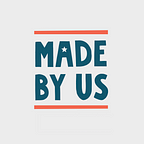“Killers of the Flower Moon” brought this Tribal Nation’s story into the spotlight. Here’s how the history was uncovered.
Written by the National Archives Foundation.
How do the least-known chapters of our history get uncovered? For author David Grann, it started with a visit to the Osage Nation museum in 2012. On one of the walls was a beautiful panoramic photo of members of the Osage nation alongside white settlers. But one of the panels was visibly cut out. When Grann asked the museum curator why, she said, “The devil was standing right there.”
The devil was William Hale. Hale was a local rancher but was after something else–the mineral rights to the oil-rich land that was the Osage reservation. Over the course of seven years, known to the Osage as the “Reign of Terror,” his conspiracies resulted in the murders of almost 60 of the tribal nation. White men even began marrying Osage women to exert their legal rights as spouses to claim the oil-rich land as their own. This was the case for the focus of Grann’s book, Mollie Burkhart, an Osage woman married to a white man. Though William Hale was the mastermind of the murders, Mollie’s husband, Ernest, was in on the conspiracy and double-crossed her.
Ernest happened to be the nephew of the notorious William Hale. Along with a third conspirator, John Ramsey, the two men orchestrated a series of murders targeting Mollie’s family. They planned to kill Mollie last so that Ernest could maximize his inheritance and retain all of the family’s mineral rights for himself. Though Hale’s conspiracy was unraveled before she became a victim, Mollie was one of the last surviving members of her family. “At great peril to her own life, she crusaded for justice. I didn’t think you could understand these events without her perspective,” said the author David Grann.
To tell Mollie’s story, Grann began his research at the National Archives Museum in Fort Worth. Hearing of his compelling research, Archives staff worked to help David pull more than 3,000 documents relevant to the Osage, including:
- Original accounts from Osage who lived through that time;
- Records from private investigators who tried to both solve the crimes and cover them up;
- Secret grand jury testimony;
- Records from J. Edgar Hoover, the FBI director who took on the case that made the Bureau what it is today.
Grann also conducted oral history interviews of descendants of the Osage who lived through the Reign of Terror.
According to Grann, “The museum director had removed the photograph of the killer not to forget what happened, but because the Osage can’t forget. And yet too many Americans, including myself, had either forgotten or never knew about this part of history…I think this episode is a further reminder that much of our history is scattered in archives, crying out to be told.”
So how can you help history like this be uncovered? Like Grann, you can start at the museum. Follow and visit history museums and historic sites that promote lesser-known voices and tell the stories that you didn’t learn in school. History is meant to be shared, so be sure to pass along your new knowledge to friends and family.
If you want to take your interest a step further, consider doing some original research. While this may sound intimidating at first, the National Archives is here to help!
Resources to Learn More
To learn more Indigenous history, you can use the Bureau of Indian Affairs finding aid, where you can search by Tribal Nation, topic, or state to access more than 18,000 original photos telling the stories of Indigenous peoples.
347 Native American treaties have also been digitized in the holdings of the National Archives. Digitreaties.org allows users to explore treaties by tribal nations with its explorer tool.
You can also get in-person help! The National Archives has 47 facilities nationwide that are open to the public for research. Learn more and make an appointment at archives.gov/research.
